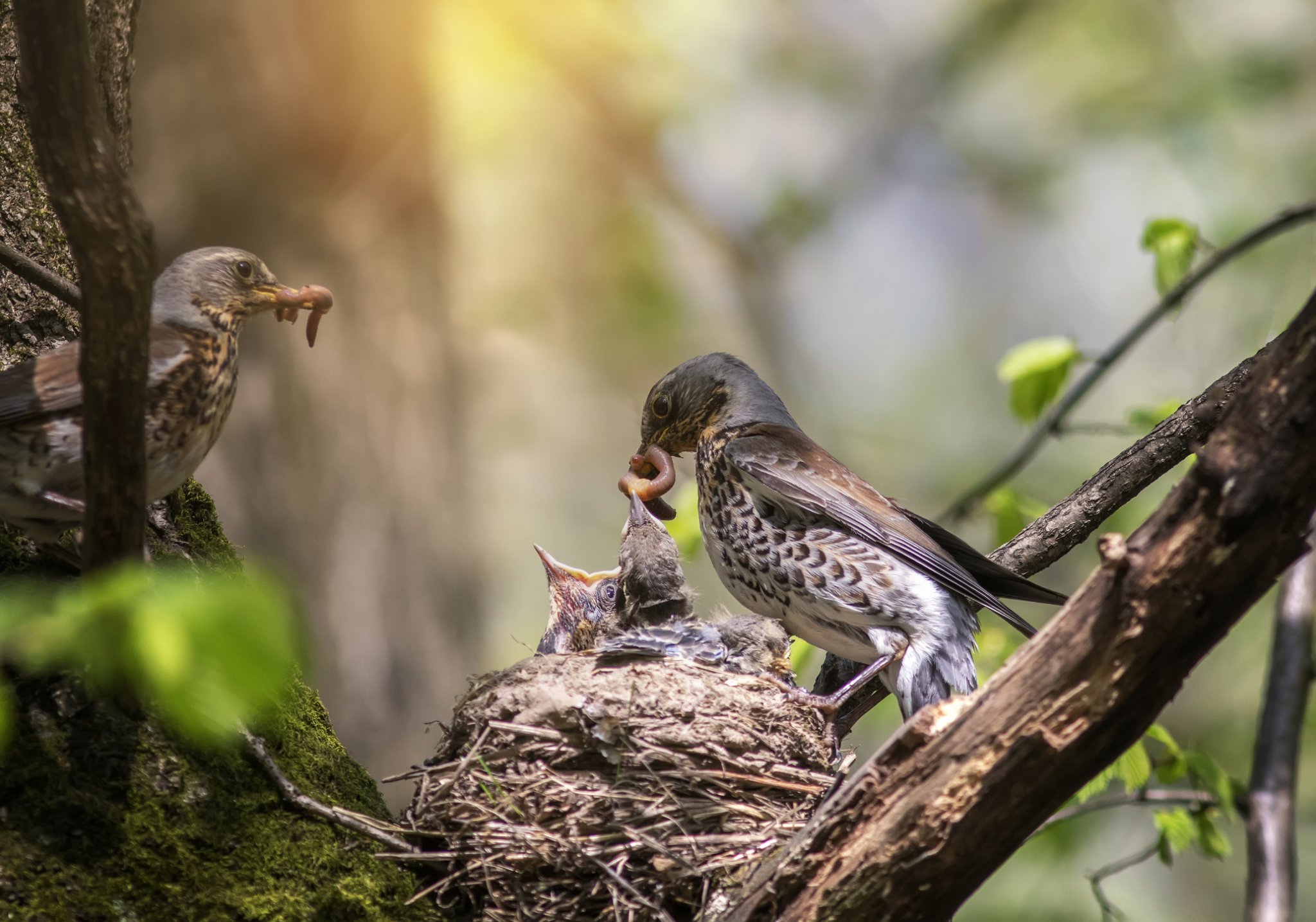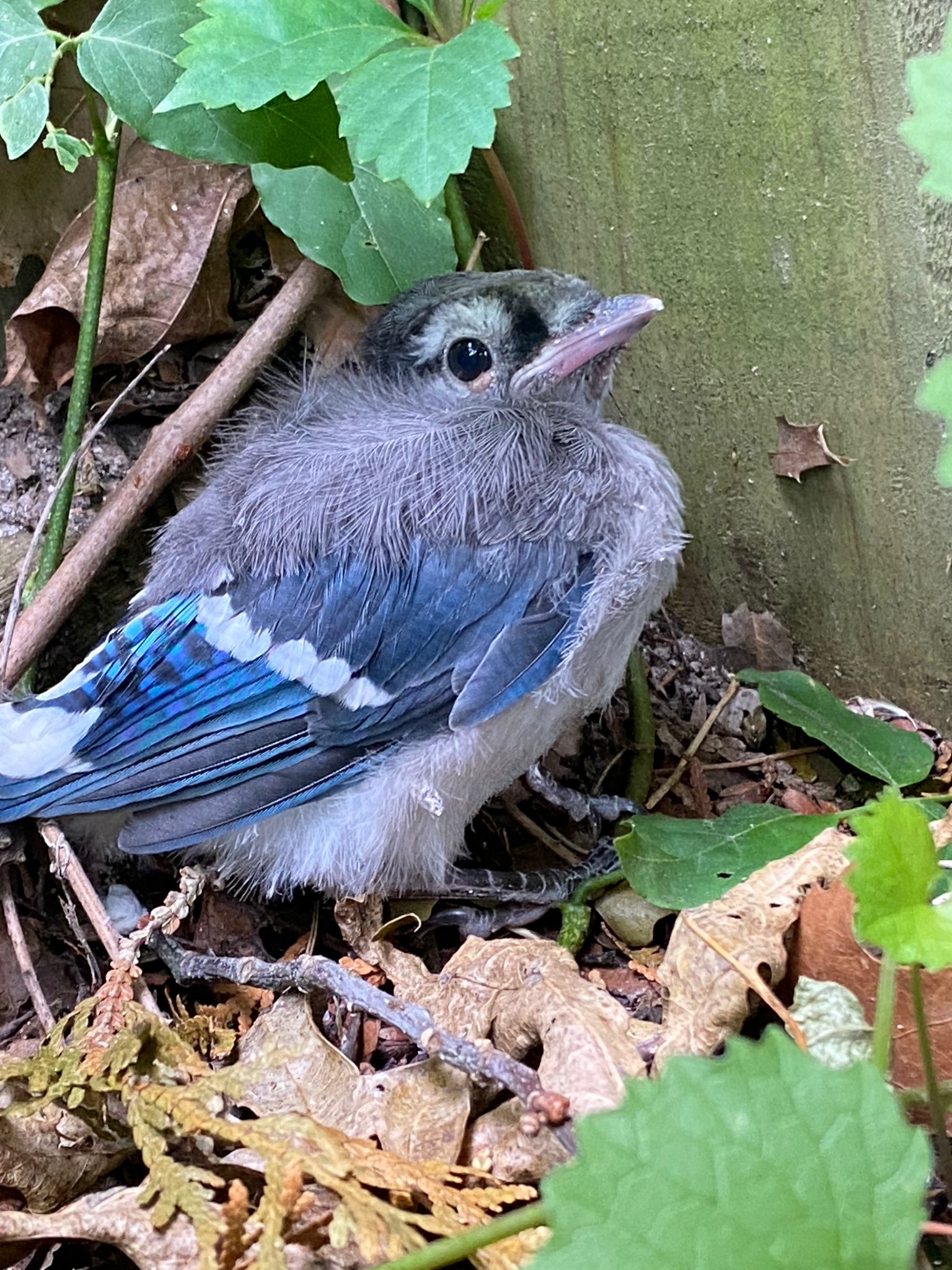Learn When & How to Care for Baby Birds in Songbird Summer

Tucked between quiet roads and rising temperatures, Long Island hums with wildlife, and right now, the Evelyn Alexander Wildlife Rescue Center (EAWRC) is hearing more songs than ever. As part of the Atlantic Flyway, Long Island is essentially a superhighway for birds, bringing thousands of migratory species to our region. That means we’re in the heart of baby bird season, and renesting is crucial to supporting these populations.
Rose Lynch, animal care assistant at the EAWRC explains, “We’re home to so many birds just because of where we are. Right now, songbirds are our biggest concern.” These songbirds, including ravens, robins, cardinals, wrens, and many others, are perching species, known for their vocal complexity and intricate songs.
At the moment, the earliest baby birds are arriving as EAWRC employees report on mourning doves, Carolina wrens, and house sparrows. Later in the summer, the EAWRC expects longer-distance migrants like swallows, eastern phoebes, and kingbirds. “We see the invasive species mate first,” Lynch notes, “but then our migrants start arriving, and it doesn’t stop.”
The EAWRC uses a method called conspecific pairing, placing songbirds with others that share similar ecological roles or developmental stages, even if they’re different species. “They learn from each other,” Lynch explains, “a mockingbird might be in the same incubator as a robin. Two cardinals might share space with a wren. If they’re maturing at similar speeds, it works.”
Inside the EAWRC’s packed aviary, blue jays, grackles, and starlings, all who were separated from their mothers, are being held together due to their aggressive mobbing behavior. “They’re just like that in the wild,” Lynch says, “they’re intense birds, so they can’t be with the more delicate ones.”
Determining that developmental stage is more art than science: behavior, feather growth, and vocalizations are all monitored. Lynch’s approach is personal. “I set daily goals for each bird, whether it’s hydration, weight gain, or eating solid food,” she says, “Mealworms are great. We try to feed solid food as soon as they can handle it. It helps their digestion and prepares them for life outside.”

For nestlings, who are unfeathered and fragile, EAWRC staff feed every 30 minutes from sunrise to sunset. “We start them in incubators, and once they’re fully feathered, we move them out to learn to regulate their temperature,” Lynch explains. After a few days outside the incubator, it’s on to the aviary.
Thanks to support from volunteers, the EAWRC now has full use of its aviary, with enough space to sort birds by personality, age, and size. Inside are residents like a black-capped chickadee fledgling weighing just 9 grams, recently paired with a young brown-headed cowbird and a gray catbird. “They’re all very young,” Lynch says. “It’s a good match, they get along and figure things out together.”
But the cause of many bird admissions is heartbreaking, and preventable. “Cats are a big one,” Lynch says. “Domesticated outdoor cats will pull baby birds straight from the nest. Their claws carry bacteria that birds can’t fight off. It’s built to kill. Please keep your cats indoors if you know you have a nest nearby, especially during this season.”
Other causes include high coastal winds, unstable nests, or well-meaning humans who don’t know when to intervene. “If you see a fledgling on the ground who is vocalizing, upright, and the parents are nearby, leave them alone,” Lynch urges. “They’re learning to fly. They have to be there.”
When renesting is needed, location is everything. “You have to put the baby back as close as possible to where it fell,” Lynch explains. “The mother bird will hang out for a couple days and usually return.”
That’s exactly what happened to Max Strongin and his family in East Hampton. “We opened our patio umbrella, and a nest full of newborns dropped to the ground,” Strongin recalls. “It was invisible, right inside the fabric.” The family placed the babies in a box and called the EAWRC. “They told us how to keep them warm overnight and then helped us get them to a vet. The EAWRC took over from there, hydrated them, fed them, and then came back to renest them in a nearby bush,” he explains.
Five days later, the Strongin family had good news, as “Four out of six are doing great. The mom came back. She’s been feeding them. My kids and I are so happy, we’ve been watching them. It’s been such a special experience.”
Executive Director Kathleen Mulcahy agrees. “The community really shows up,” she says. “People stop what they’re doing to call us, and it doesn’t end there. They follow up. They want to know, ‘are the babies eating? Are they doing well?’ It’s incredibly heartwarming.”
The EAWRC averages around three renesting calls a week, but during the summer it can feel nonstop. “It’s all hands on deck,” Lynch says, laughing. “And it’s worth it.”
If you find a baby bird, don’t panic. Watch, listen, and call if you’re unsure. Sometimes, doing nothing is the best help of all.
The Evelyn Alexander Wildlife Rescue Center is located at 228 West Montauk Highway, Hampton Bays. It can be reached at 631-728-4200, and animal emergencies can be reported at 631-728-WILD (9453). The center is open 9 a.m.–5 p.m. seven days a week. Visit wildliferescuecenter.org for more information.









